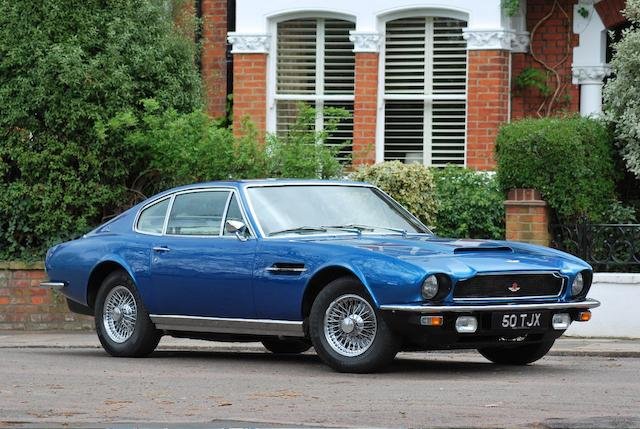From that era dates the Aston Martin V8, a beauty of a Gran Turismo with an unimaginably long life cycle, from 1972 to 1989. For a long time, it stood in the shadow of the earlier DB generations, but it has since been in high demand.
A turbulent history
With nine bankruptcies and a history of never making a profit until a few years back, it is fair to conclude that Aston Martin has an eventful life story. Those who only know the successes of the present can hardly imagine that the factory was regularly ailing.
If you spread out 1903 built V8s over a production period of a scant two decades, you arrive at the smallest number per year with two zeros. When you consider that very few V8s were produced in almost two decades, you can understand why they are now so sought after in the classic car market. While prices won't be as high as those of the earlier models, they have gone up considerably.
Market leader in the sixties
In the 1960s, Aston Martin pretty much had the empire in the exclusive sports coupe segment. Its petulant Italian rivals were hardly a match and the Jaguar E-Type was clearly a step below the DB4, DB5 and DB6.
With the completely redesigned DBS, Aston Martin surpassed itself and this car grew into the Aston Martin V8. Sales of this stunning Gran Turismo with its luxuriously appointed interior began in 1972.
Externally, the V8 differed from the DBS by having a front end with single headlights instead of double, and a modified rear end. It adopted the Bosch-injected 5.3-litre V8 engine that had been used since 1970. However, this complex and somewhat fault-prone system was costly to produce, and could not be maintained for long.
Soon Weber carburettors were used for fuelling, resulting in a raised hump on the bonnet. Meanwhile, Aston Martin again found itself on the brink of collapse and could only be saved in the nick of time by two American businessmen. They streamlined the production process, although handwork would still remain an important factor.
Aston Martin V8 Vantage and Volante
Under pressure from the oil crisis (1973), Aston Martin scaled back engine power, but during the 1970s it climbed back up again and to top it off, they launched the spectacular Aston Martin V8 Vantage in 1977.
The fierce front spoiler left no mistaking the potential of the engine, boosted to 375 hp. An open V8 followed in 1979, with the Volante, which in the latter days of the range could be optioned in Vantage configuration. It constituted a frenetic attempt to keep the rather outdated car in the limelight; budget to drastically tackle it was simply lacking.
A little earlier, in 1986, the regular V8 switched to an injection engine. This type can be identified by a flattened bonnet. With only seemingly minimal changes, the model lasted nineteen years, until the Virage arrived in 1989.
Growing interest
Both affluent car enthusiasts and investors disappointed with property values have now discovered the Aston Martin V8. The market value of these cars is now many times higher than what they had to fetch at the beginning of the 21st century, and the question is whether there is still room for further growth.
We are seeing a situation where people who find a DB4, DB5 or DB6 too expensive (their prices are now running into the tonnes) are switching to a DBS or the less popular V8. What certainly plays a part in the growing interest in this youngtimer is the prominent position Aston Martin has occupied in the world of super sports cars for several decades. The brand can almost be considered trendy, and that arouses curiosity about what it has produced in the past. The V8 is clearly starting to emerge from oblivion.
Important considerations when restoring an Aston Martin V8
If you're looking for an affordable project to keep yourself busy over the winter, think again. It can get pretty out of hand, as many parts are mainly available through Aston Martin and are very expensive. If you have to outsource everything, you shouldn't embark on a restoration project at all; even regular maintenance is not a cheap affair.
The V8 has the advantage of an aluminium body, but underneath, rust can do serious damage. Overall, the quality of the car is not bad, but if you have plans to buy one, be sure to take an expert with you!
Important considerations when owning an Aston Martin V8:
- American specimens may have significantly less engine power.
- Converting from right-hand drive to left-hand drive is not a huge operation.
- LPG is a viable option given the fuel economy.
- Aston Martin quality was affected by bankruptcies in the early 1970s and late 1980s.
- These cars have the least breakdowns when driven regularly.
- They drive reasonably sporty, but not very nimble.
If you can afford it and have the financial means, owning a reliable Aston Martin V8 is a great experience where you can enjoy top class in all its facets!
Nouvelles connexes

